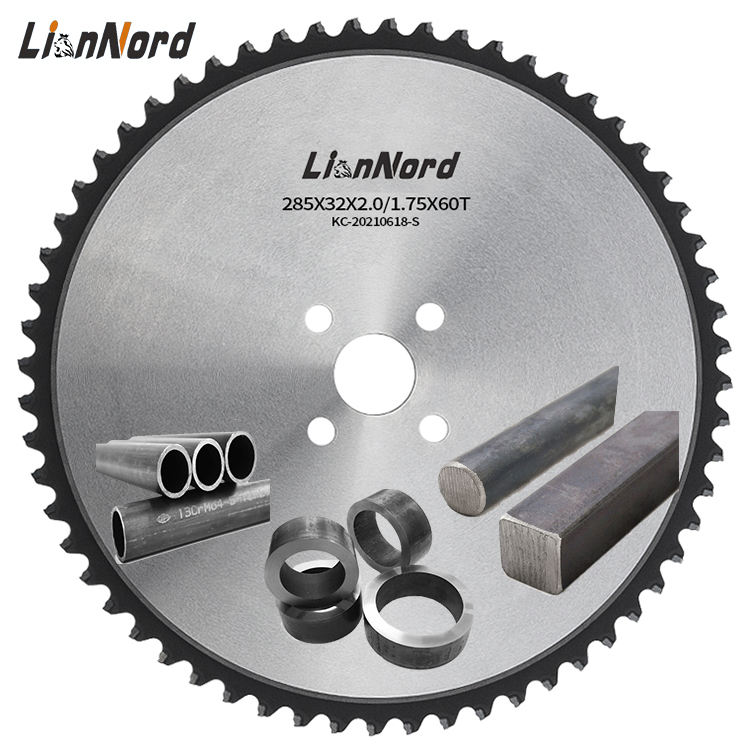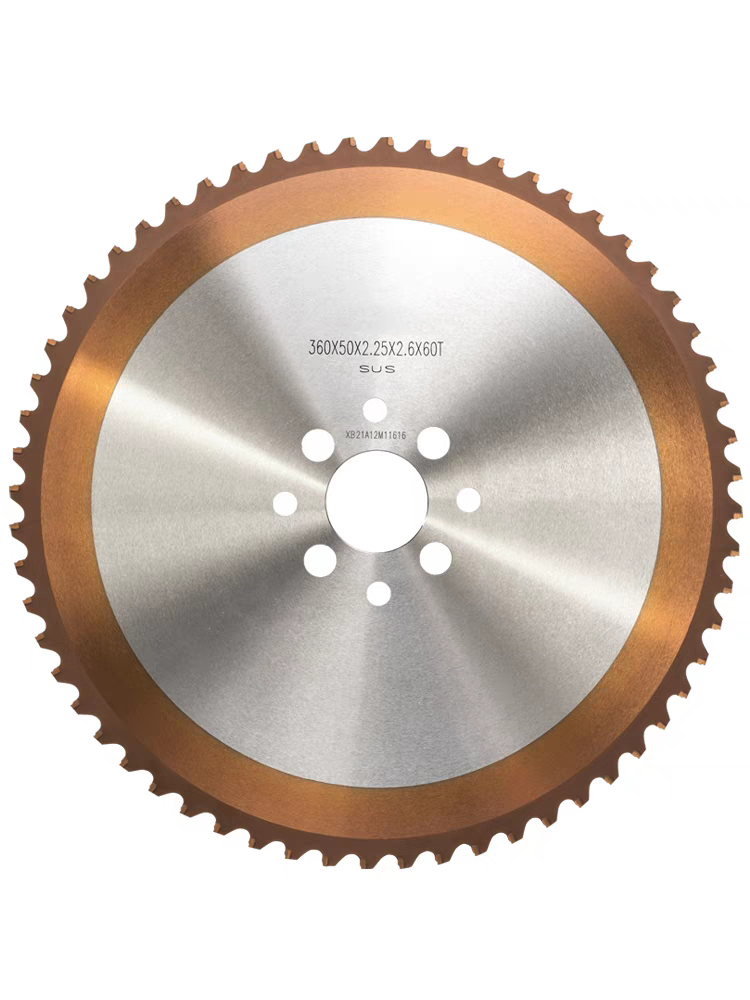
Ceramic circular saw blades (mainly use on circular saw machine for metal cutting )

Carbide teeth cold saw blade (mainly use on circular saw machine for metal cutting )
Ceramic saw blades and alloy saw blades are used in different applications and have distinct characteristics. Here’s a breakdown of their differences and guidance on how to choose between them:
Differences Between Ceramic and Alloy Saw Blades
1. Material Composition:
-
Ceramic Saw Blades:
- Made from a composite of ceramic materials, often incorporating diamond particles bonded to a ceramic matrix.
- Known for their hardness and ability to maintain a sharp edge longer than other materials.
-
Alloy Saw Blades:
- Typically made from high-speed steel (HSS) or tungsten carbide composites.
- Alloy blades can vary in composition, but they generally include metal alloys designed to enhance durability and cutting performance.
2. Cutting Performance:
-
Ceramic Blades:
- mainly cutting soft material like low/middle/ high Carbon Steel , Q235, Mould steel , bearing steel ,the blade coating mainly use lubrication function.
-
Alloy Blades:
- Suitable for cutting SS steel , SS iron , the blade coating mainly use Anti friction function.
3. Durability and Lifespan:
-
Ceramic Blades:
- Generally have a longer lifespan when cutting hard materials due to their hardness.
- However, they can be brittle and prone to chipping if misused.
-
Alloy Blades:
- More durable when cutting materials that require toughness; however, they may dull more quickly when used on very hard materials compared to ceramic blades.
4. Cost:
-
Ceramic Blades:
- Usually more expensive due to the advanced materials and manufacturing processes.
-
Alloy Blades:
- Often more cost-effective, making them a popular choice for a wider range of cutting applications.
How to Choose Between Ceramic and Alloy Saw Blades
When deciding between ceramic and alloy saw blades, consider the following factors:
-
Type of Material to Cut:
- Ceramic Blades: Best for hard materials such as ceramics, tile, and glass.
- Alloy Blades: Better for softer materials like wood, plastic, and some metals.
-
Application Requirements:
- If you need precision cuts with minimal chipping, such as for tiling or glasswork, ceramic blades are usually the better choice.
- For general woodworking or demolition work, alloy blades are more versatile and often preferred.
-
Cutting Speed and Efficiency:
- Consider the cutting speed required for your projects. Ceramic blades can offer faster cuts in hard materials, while alloy blades may be preferred for diverse projects due to their availability and cost-effectiveness.
-
Budget:
- Assess your budget constraints. If you have the resources for higher-priced ceramic blades and your work requires frequent cuts of hard materials, they may be worth the investment. Conversely, if you’re cutting a wide variety of softer materials, alloy blades may be more economical.
-
Frequency of Use:
- For regular and heavy use in specific applications (like tile installation), investing in high-quality ceramic blades may save you time and money in the long run due to their durability. For occasional use, alloy blades might suffice.
Conclusion
Choosing between ceramic and alloy saw blades ultimately depends on the materials you’ll be cutting and the specific needs of your projects. Understanding the characteristics and applications of each type will help you make an informed decision and enhance your cutting efficiency.